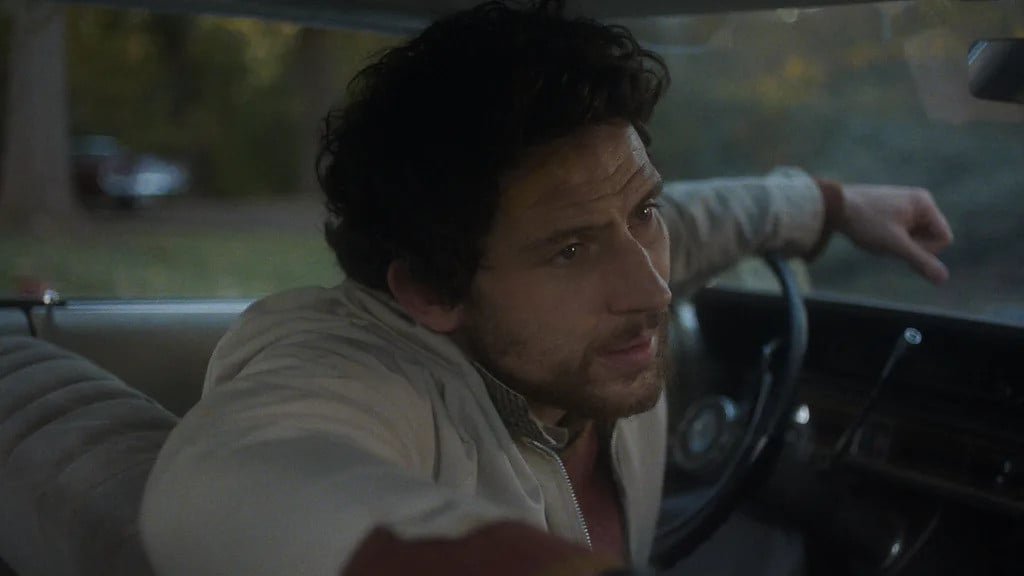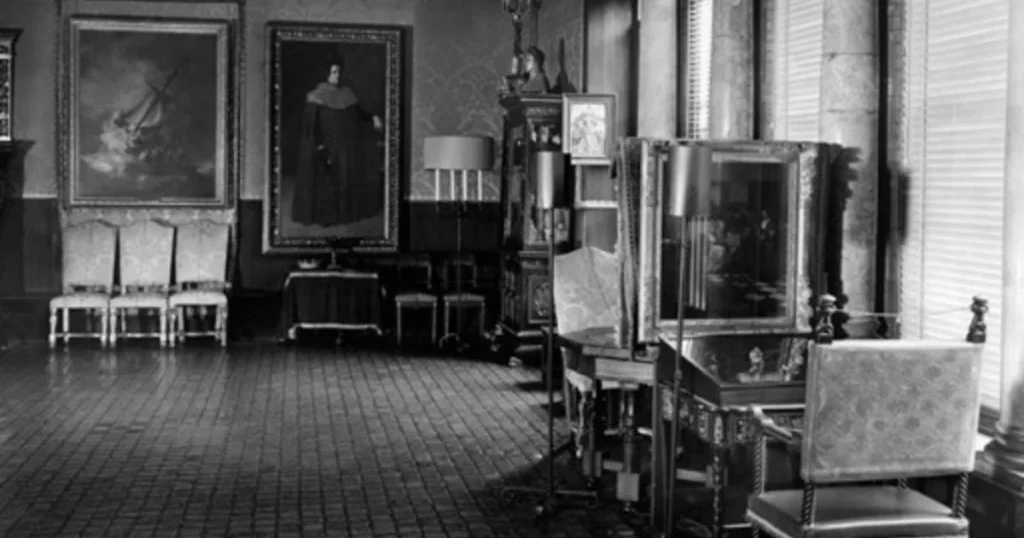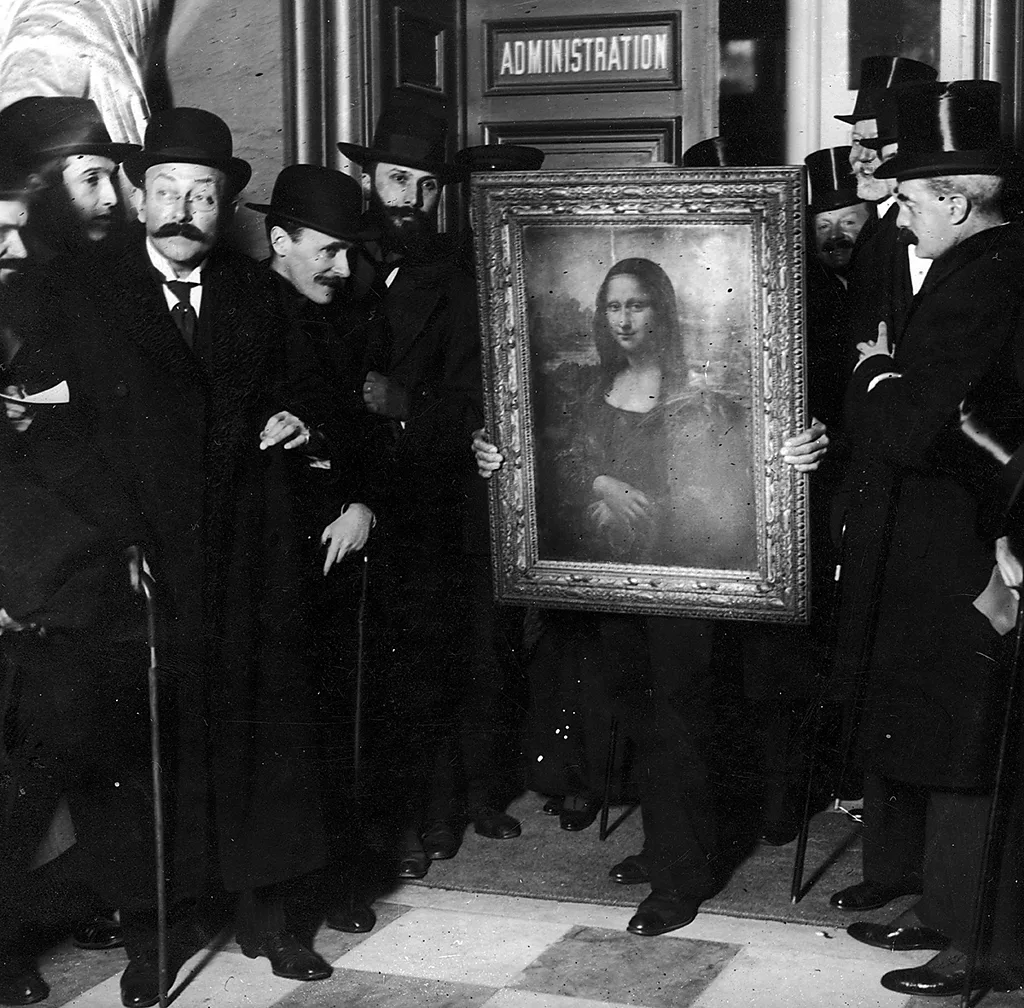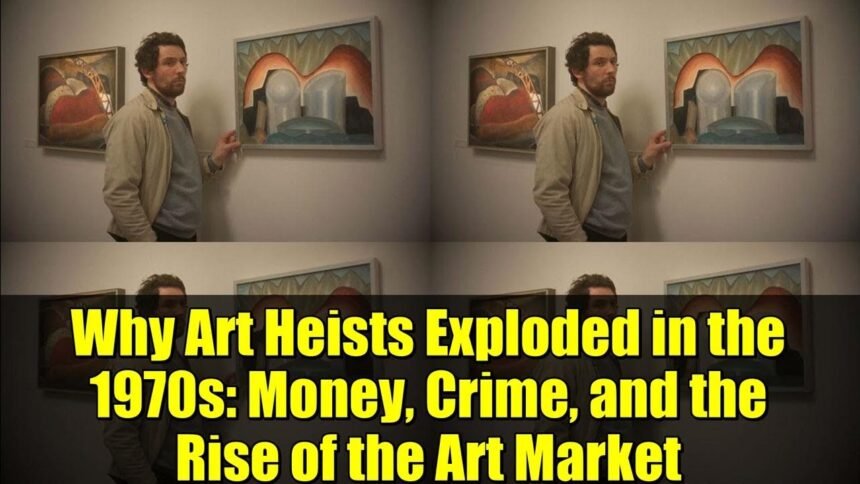The Boom of the Art Market and Rise of Art Crime

The 1970s marked a strange and transformative decade — one of rebellion, economic turbulence, and shifting values. It was also the era when a new type of criminal emerged: the art thief. The decade witnessed a surge in museum break-ins and daring robberies across the world, as priceless paintings suddenly became symbols of wealth and power. This rise in art heists in the 1970s was more than a series of spectacular crimes; it reflected a profound cultural shift in how society viewed art — not merely as beauty, but as currency.
The Worcester Robbery: A Turning Point in Art Heists of the 1970s
In May 1972, two men entered the Worcester Art Museum in Massachusetts. Within minutes, they fled carrying four valuable paintings — masterpieces by Paul Gauguin, Pablo Picasso, and a work once believed to be by Rembrandt. As they escaped, they held high school students at gunpoint and wounded a security guard. The stolen artworks, valued at $2 million at the time, made headlines across America. Newspapers called it one of the most audacious museum robberies in modern history.
The mastermind behind the theft was Florian “Al” Monday, a seasoned criminal. Yet, his downfall came swiftly. The thieves he recruited couldn’t resist bragging about their crime at a local bar. Within weeks, police discovered the paintings hidden on a pig farm in Rhode Island. The artworks were safely returned, but the heist had already captured the imagination of a nation.
This incident didn’t just inspire filmmakers decades later; it ignited a trend. The Worcester robbery became the spark that set off a chain reaction of art heists in the 1970s, transforming museum theft into a global phenomenon.
Art Heists in the 1970s and the Rise of ‘The Mastermind’
The true story of the Worcester heist later inspired the feature film The Mastermind, starring Josh O’Connor. The film reimagines the event through a fictional lens, exploring the psychology of those who plan and execute art robberies. O’Connor’s character, JB Mooney, is a disillusioned art school dropout — intelligent but trapped by financial pressures and personal frustrations. His descent into crime mirrors a broader social theme of the 1970s: when ordinary people, feeling left behind, began taking desperate measures.

Unlike the sleek, polished portrayals of heists in films like The Thomas Crown Affair, The Mastermind strips away the glamour. It reveals the chaos, fear, and moral decay behind such acts. This humanized portrayal mirrors reality — many of the art heists in the 1970s were not executed by genius criminals but by opportunists stumbling through the art world’s vulnerabilities.
Other Major Art Heists of the 1970s
The Worcester robbery wasn’t an isolated event. Similar crimes erupted across continents, proving that the art world had become a target for thieves worldwide.
The Montreal Museum of Fine Arts Robbery: One of the Most Daring Art Heists in the 1970s
Just months after the Worcester theft, Canada faced its own headline-making crime. Armed robbers broke into the Montreal Museum of Fine Arts through a skylight, stealing paintings, jewelry, and artifacts worth around $2 million. It remains one of Canada’s largest unsolved art heists. The robbery revealed how easily thieves could exploit museum weaknesses, from poor alarm systems to limited security staff.
The Palais des Papes Theft: One of the Most Shocking Art Heists in the 1970s
Four years later, in France, over a hundred of Picasso’s final works vanished from an exhibition at the Palais des Papes in Avignon. The robbery stunned Europe. Not only did it involve irreplaceable art, but it also demonstrated that even prestigious institutions could be breached.
The Russborough House Robbery (Ireland, 1974)
One of the decade’s most politically charged heists occurred in Ireland. Rose Dugdale, a wealthy Oxford graduate turned Irish republican, led an armed group that stole 19 paintings, including works by Vermeer and Rubens, from Russborough House. The paintings were held for ransom in exchange for imprisoned IRA members. The crime blended political activism with high-value art theft — a unique feature of art heists in the 1970s, when ideological motives often mingled with greed.
The Changing Nature of Art and Value
Before the 1970s, stealing paintings wasn’t a mainstream criminal pursuit. That changed as art became synonymous with wealth and status. The decade saw the birth of art as an investment — a concept fueled by booming auction prices and television programs showcasing art valuation.

Art historian Tom Flynn has noted that this period “coincided with the boom of the art market.” Shows like Antiques Roadshow, launched in 1977, taught audiences to see paintings as financial assets. The result was a psychological shift: criminals began viewing museums as banks — and paintings as money.
This newfound perception played a crucial role in art heists in the 1970s. Paintings, once seen as cultural treasures, became portable riches for those willing to take the risk.
Museum Security and the Criminal Opportunity
During the 1970s, many museums faced severe funding shortages. Inflation and government cutbacks left cultural institutions vulnerable. Security systems were outdated, guards were often unarmed, and surveillance cameras were rare.
Even high-profile galleries suffered embarrassing lapses. In London, Francisco Goya’s Portrait of the Duke of Wellington was stolen in 1961, while three Rembrandt paintings disappeared from Dulwich Picture Gallery in 1966. These incidents proved that stealing valuable art was shockingly easy — sometimes as simple as lifting a painting off the wall and walking out.
Such weaknesses emboldened a new wave of criminals. Many had little understanding of art’s true value or the difficulty of selling stolen masterpieces. Once the thefts were committed, they discovered that famous paintings were nearly impossible to trade without drawing attention. Still, the appeal of instant wealth made art heists in the 1970s irresistible.
The Myth of the Gentleman Thief
Cinema and media played a significant role in romanticizing the art thief. In the 1960s and ’70s, films like Topkapi, How to Steal a Million, and Gambit turned criminals into charismatic anti-heroes. These stories, filled with charm and cleverness, helped shape a public fascination with the idea of the cultured outlaw — someone who could outsmart the establishment without spilling blood.
This archetype reflected the political mood of the era. Disillusioned by the Vietnam War, Watergate, and growing inequality, many people admired characters who rebelled against authority. The art robber became a symbol of wit and defiance, rather than greed or destruction.
However, the real-life figures behind art heists in the 1970s rarely matched that fantasy. Most were impulsive, unskilled, and unprepared for the logistics of fencing stolen art. Yet the myth of the “lovable rogue” persisted, cementing itself in pop culture.
A Cultural Reflection of Rebellion
Art thefts of the 1970s can’t be understood without examining the wider social unrest of the time. The decade was marked by anti-establishment movements, inflation, and distrust in authority. In many ways, stealing art became a twisted act of protest — a statement against elitism and wealth concentration.
Even when political motives weren’t explicit, the psychology was clear: art symbolized privilege. To steal it was, in the eyes of some, to reclaim what society had hoarded. This mindset blurred moral boundaries and helped justify the wave of art heists in the 1970s as acts of rebellion rather than pure crime.
Deconstructing the Heist: Reality vs. Fiction
In modern storytelling, directors like Kelly Reichardt have sought to deconstruct the romantic image of the art thief. The Mastermind portrays crime not as a glamorous game but as a desperate, chaotic act. Through her protagonist, Reichardt exposes the illusion of control — showing that those who steal art rarely understand the consequences.

Her characters are flawed, impulsive, and ultimately self-destructive. They steal not out of passion for art, but from frustration and ego. This narrative exposes what many art heists in the 1970s truly were: not elegant crimes, but messy, human failures set against a backdrop of social tension.
From Theft to Icon: How Culture Remembered the Heists
Over time, the most infamous art robberies of the 1970s have become part of cultural folklore. Books, films, and documentaries continue to revisit them, each adding a new layer of interpretation. What’s remarkable is how these crimes — despite their illegality — continue to fascinate audiences. Perhaps it’s because art itself represents human creativity, and its theft feels like the ultimate act of transgression.
The Worcester and Montreal heists, for instance, have inspired generations of storytellers. They serve as reminders that even cultural sanctuaries are vulnerable to greed — and that beauty, when given monetary value, becomes prey.
Modern Lessons from a Chaotic Era
Today, museum thefts are far less common. Advanced alarm systems, global databases, and art crime units like the FBI Art Crime Team have made large-scale robberies nearly impossible. Yet, the lessons from art heists in the 1970s remain relevant.
The decade taught the world that art is both fragile and powerful — a mirror of human ambition. It also revealed that when society starts viewing creativity as currency, crime is never far behind.
Even now, financial cuts to cultural institutions raise concerns. Experts warn that without proper funding, museums could again face vulnerabilities — not just from thieves, but from neglect, climate change, and decay. As one heritage specialist remarked, “If we don’t protect the buildings themselves, weather might destroy what thieves no longer can.”
When Art Became the Ultimate Prize
The surge of art heists in the 1970s was more than a criminal trend. It was a reflection of societal upheaval — a time when value, beauty, and morality collided. Paintings became both loot and legacy, symbols of rebellion and greed.
From Worcester to Montreal, from Avignon to Dublin, each theft told a story about desire — not just for money, but for meaning in a chaotic world. In the end, the art survived, but the myth of the “gentleman thief” faded, replaced by a more sobering truth: that every stolen masterpiece carries the fingerprints of a restless age.




